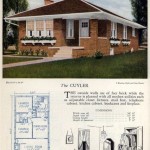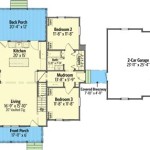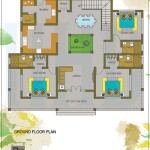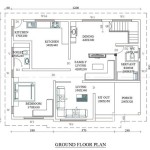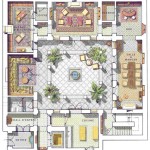Tiny House Plans: Finding Free Resources and Making Responsible Choices
The tiny house movement has gained considerable traction in recent years, fueled by desires for simplified living, reduced environmental impact, and financial freedom. A critical element of embarking on a tiny house project is securing viable plans. While professionally designed plans offer benefits like compliance with building codes and structural integrity, the accessibility of free tiny house plans online presents an attractive alternative for budget-conscious individuals. This article will explore the landscape of free tiny house plans, emphasizing where to find them, the potential pitfalls to be aware of, and responsible practices for utilizing these resources.
Identifying Reputable Sources of Free Tiny House Plans
The internet is replete with websites claiming to offer free tiny house plans. However, not all sources are created equal. Identifying reputable platforms is crucial for ensuring the plans are accurate, safe, and potentially compliant with building regulations. Several categories of sources commonly offer free plans:
DIY and Maker Communities: Websites and forums dedicated to do-it-yourself projects and maker culture often feature individuals sharing their tiny house designs. These plans can range from basic to quite detailed, often accompanied by build logs and community feedback. Examples include Instructables, Reddit's r/tinyhouses, and various DIY blogs specializing in construction.
Building Material Suppliers: Some lumber yards, hardware stores, and construction material suppliers offer free tiny house plans as a way to promote their products. These plans often incorporate specific materials sold by the supplier, potentially leading to cost savings on those components. However, it is essential to verify that the plan aligns with overall design preferences and construction capabilities.
Architects and Designers Offering Introductory Plans: Certain architects and designers may provide simplified or introductory tiny house plans for free as a marketing strategy. These plans can offer a glimpse into their design aesthetic and potentially lead to future collaboration on more complex projects. They may also be used to generate leads for customized paid plans.
Government Agencies and Non-profit Organizations: While less common, some government agencies or non-profit organizations involved in affordable housing initiatives may offer free or low-cost tiny house plans as part of their programs. These plans often prioritize energy efficiency, accessibility, and sustainable building practices. These resources can be particularly valuable for individuals seeking to build in specific geographic areas with specific permitting requirements.
It is imperative to meticulously vet any source before committing to a particular plan. Investigate the source's reputation, read reviews or comments from other users, and critically assess the plan's completeness and accuracy.
Potential Pitfalls of Using Free Tiny House Plans
While the appeal of free tiny house plans is undeniable, it is essential to acknowledge the potential challenges associated with their usage. These challenges can range from minor inconveniences to significant safety and legal ramifications.
Incomplete or Inaccurate Information: Free plans may lack crucial details regarding structural integrity, electrical wiring, plumbing, or insulation. They may also contain errors or omissions that could compromise the safety and longevity of the tiny house. Thoroughly scrutinize every aspect of the plan and cross-reference it with reputable building guides and resources.
Lack of Building Code Compliance: Tiny houses, like any other dwelling, are subject to local building codes and regulations. Free plans may not be designed to comply with these codes, potentially resulting in legal issues, fines, or even the requirement to dismantle the structure. Research local building codes thoroughly and consult with a building inspector to ensure the plan adheres to all applicable regulations. This may necessitate modifications to the free plans, potentially incurring additional costs.
Limited Support and Guidance: Unlike professionally designed plans that often come with technical support and ongoing guidance, free plans typically offer minimal to no assistance during the construction process. This can be problematic for individuals with limited construction experience, potentially leading to errors and costly rework. Actively seek out online communities and forums where experienced builders can offer advice and support.
Substandard Materials or Construction Techniques: Free plans may recommend using low-quality materials or employing outdated construction techniques, which could result in a structurally unsound or energy-inefficient tiny house. Prioritize using high-quality materials and adhering to modern building practices, even if it requires deviating from the free plan. Consult with local building suppliers or contractors to determine the optimal materials and construction methods for the specific climate and location.
Intellectual Property Concerns: Verify the licensing and copyright associated with the free plans. While the plans are free for personal use, altering them for commercial purposes or redistributing them without permission could infringe on the designer's intellectual property rights. Respect the creative work of others and ensure proper attribution or licensing agreements are in place if modifying or sharing the plans.
Addressing these potential pitfalls requires diligence, research, and a willingness to invest additional time and resources to ensure the successful and safe construction of the tiny house.
Responsible Practices for Utilizing Free Tiny House Plans
Despite the potential challenges, free tiny house plans can be a valuable resource when approached responsibly. Implementing certain practices can mitigate risks and increase the likelihood of a successful project.
Comprehensive Plan Review and Modification: Before commencing construction, meticulously review the free plans to identify any potential shortcomings or areas of concern. Compare the plans to reputable building guides, online resources, and local building codes. Be prepared to modify the plans to address any deficiencies and ensure compliance with all applicable regulations. Consider engaging a qualified architect or structural engineer to review the plans and provide professional guidance.
Prioritize Structural Integrity and Safety: Structural integrity should be the paramount concern when building a tiny house. Ensure that the foundation, framing, and roofing systems are robust and capable of withstanding local weather conditions. Consult with a structural engineer to verify the load-bearing capacity of the design and identify any potential weaknesses. Use high-quality materials and adhere to established construction practices to ensure the safety and longevity of the structure.
Research and Understand Local Building Codes: Familiarize oneself thoroughly with local building codes and regulations before starting any construction. Contact the local building department to obtain information on permitting requirements, inspection schedules, and specific code provisions applicable to tiny houses. Ensure that the free plans, or any modifications made to them, comply with all relevant codes. Failure to comply with building codes can result in costly penalties and delays.
Seek Expert Advice and Consultation: Do not hesitate to seek advice from experienced builders, contractors, or architects. Even if using free plans, consulting with professionals can provide valuable insights and help avoid costly mistakes. Engage a qualified electrician and plumber to ensure that the electrical and plumbing systems are installed safely and in compliance with code. Consider hiring a general contractor to oversee the project, particularly if lacking extensive construction experience.
Embrace Continuous Learning and Adaptation: The construction of a tiny house is a learning process. Be prepared to adapt the plans and construction techniques as needed based on experience, unforeseen challenges, and feedback from experts. Continuously research best practices, explore alternative materials, and refine the design based on practical considerations. Embrace the iterative nature of the building process and be willing to learn from mistakes.
Document the Entire Process: Maintain detailed records of all construction activities, including materials used, costs incurred, and any modifications made to the plans. Take photographs or videos of each stage of the construction process. This documentation can be invaluable for future maintenance, resale, or addressing any potential issues that may arise. Proper documentation also serves as a valuable resource for reflecting on the project and sharing experiences with others in the tiny house community.
By adopting these responsible practices, individuals can maximize the benefits of free tiny house plans while mitigating the associated risks. A thoughtful and proactive approach is essential for ensuring the successful and safe construction of a tiny house that meets personal needs and complies with all applicable regulations.

27 Adorable Free Tiny House Floor Plans Small

Free Tumbleweed Diy Tiny House Plans Houses
:max_bytes(150000):strip_icc()/ana-tiny-house-58f8eb933df78ca1597b7980.jpg?strip=all)
4 Free Diy Plans For Building A Tiny House

27 Adorable Free Tiny House Floor Plans Small

Free Tiny House Building Plans Marjolein In Het Klein

Quartz Tiny House Free Plans Ana White

27 Adorable Free Tiny House Floor Plans Craft Mart

Quartz Tiny House Free Plans Ana White

Tiny House Floor Plans 32 Home On Wheels Design
:max_bytes(150000):strip_icc()/__opt__aboutcom__coeus__resources__content_migration__treehugger__images__2018__03__tiny-house-macy-miller-12a993a38eda4913a0e8ab1b231e79d3.jpg?strip=all)
Want To Build A Tiny House Here S Where You Can Find Floor Plans



